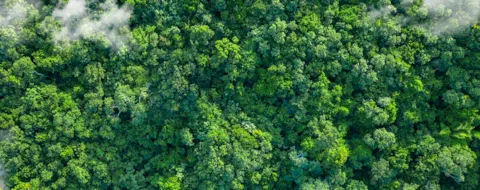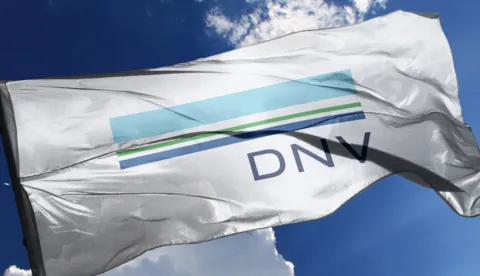In 2020, DNV set a goal to become climate positive. This means we aim to remove more greenhouse gas emissions from the atmosphere than we create as an organization.
We understand that addressing climate change requires a comprehensive approach, which begins with a thorough evaluation of our carbon emissions and reducing these first, then compensate for our remaining emissions. However, we beleive that the market for carbon removals needs to scale to for us to reach Net Zero collectively, and to do that they need financing now.
As a company, our goal is to achieve a 50% reduction in carbon emissions per employee by 2025, compared to our baseline from 2019. We are achieving this through a combination of strategies, including the adoption of renewable energy sources, the reduction of air travel, and changing our car fleet to EVs. Despite these efforts, we acknowledge that a residual carbon footprint will remain.
To address this, we have offset our 2018-2023 emissions by contributing to reforestation/ afforestation projects. We recognize that offsets are contentious and there are many valid criticisms of the schemes. We take these criticisms seriously as part of our decision process when selecting projects to invest in.
DNV uses The Oxford Principles for Net Zero Aligned Carbon Offsetting that emphasizes reviewing the integrity of carbon credits and encouraging transparency. We have chosen to focus our efforts on carbon removal projects rather than emission reduction projects as we believe these are important projects to scale in order to reach Net Zero collectively. This was also highlighted in DNV's report Pathway to Net Zero.
Our climate positive strategy is based on the following principles:
- Reduce Emissions First: Prioritize internal emission reductions.
- High-Quality Offsets: Use verifiable, additional, and permanent credits.
- Focus on Removals: Transition to carbon removal projects.
- Nature-Based Solutions: Invest in ecosystem protection and restoration.
- Support innovation: including long-term market commitments and financing mechanisms for carbon removals.
- Transparency: Report offset use and impacts clearly.
During 2022, we reviewed our approach to obtaining carbon credits, taking into account issues such as transparency, traceability, and the quality of carbon credits in the voluntary carbon market. As a result, we created a new due diligence process to assess additionality (whether the project contributes to more carbon storage than if the investment did not take place), project risks, and whether the projects are well managed and anchored in the community. DNV’s goal is to have long-term commitment to the projects we support. In 2022, we chose to support two reforestation projects with sustainably-managed timber plantations in Paraguay (Miller plantations) and in Sierra Leone (Miro plantations). In 2023, DNV purchased carbon credits in the same two projects and in Ghana (Miro plantations). In 2024, DNV purchased credits the Miro plantations in Sierra Leone and Ghana, in adddition to a new project in Malaysia. These projects store carbon efficiently and are classified as afforestation (carbon removal) projects that also works to provide an income to hundreds of local people and their families. For more details of the projects, please see our Annual Report.
To move beyond offsets, we are investigating carbon capture and storage projects where we can leverage our technical expertise to help scale innovation and technology. Our first project, Seaweed Carbon Solutions, demonstrates our commitment to investing in the research needed to understand viable carbon capture methods. DNV is part of a Joint Industry Project that is growing seaweed to capture CO2 and create biochar.
In 2024, DNV entered a significant five-year agreement with Inherit Carbon Solutions to purchase CO₂ removal certificates from 2025 onwards. Inherit aims to capture CO₂ from biogas production and store it permanently.
We will continue to explore additional opportunities to invest in innovative nature-based solutions or carbon capture and storage projects, with the goal of making a tangible contribution towards achieving a low-carbon future.



